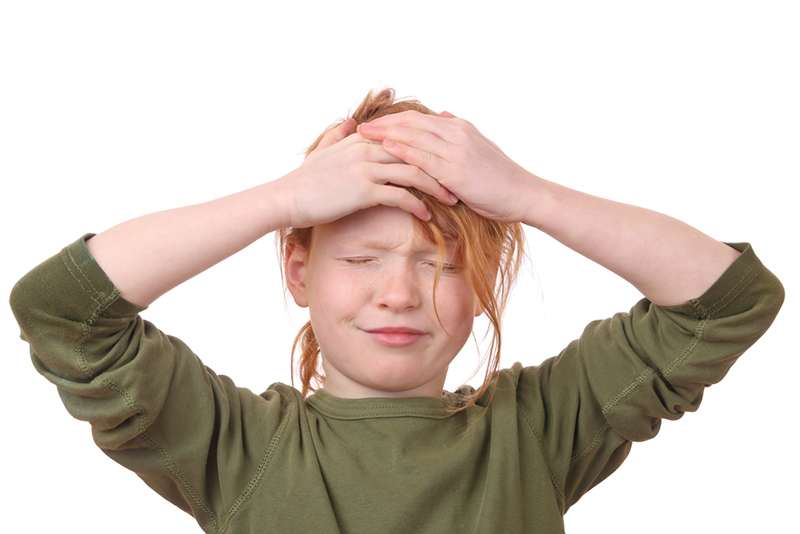
Headaches are a common condition that affect about 10 million school-age children in the United States alone. The most frequent types of headaches children experience are tension-type or migraine headaches.
Differences between tension and migraine headache
Tension headaches are less severe than migraine and most children do not have to stop activity when they have a tension headache. Migraines tend to be more severe and cause children to miss school. They can be associated with sensitivity to light and sound, nausea and vomiting. In addition, it is difficult for young children to describe their pain, please talk to your doctor about finding the source of the pain.
Time and tempo
Episodic headaches occur only a few times a month and most children can get relief with over-the-counter pain medication such as acetaminophen or ibuprofen. However, many parents may end up relying on these medications too frequently and this may actually cause headaches to get worse. Chronic headaches occur more than a few times a week. If a child is having more than one headache a week, he/she should seek medical attention as soon as possible.
Role of stress and triggers
Some common headache triggers are lack of sleep and skipping meals. While these can be easy to prevent, stress is not. Looking forward to a sleepover with friends or studying for a math test can result in headache. Although most parents would like to protect their children from stress, stress is not always a bad thing. It is a normal part of a child’s development and experiences. The more parents and educators know about headache triggers, symptoms and prevention, the more we can help kids do their best.
Sometimes it’s not always a headache
Young children with migraine may not have head pain, but rather get recurring stomach aches or dizzy spells. Other children may experience frequent and forceful vomiting for a few hours and feel fine afterwards. These types of migraines are called migraine variants. Very rarely, headache can be a signal for something more serious. Often, these children will need to see a specialist to make the correct diagnosis.
How parents can help
Be realistic. Know what your child can handle and have a discussion with your child about the right balance for him/her among school, extracurricular activities and free time. Learning how to cope with stress and knowing relaxation techniques is key to headache prevention. People with migraines tend to do better if they do things “routinely.” That means getting the same amount of sleep every day (this can range from 8-12 hours for children), not skipping meals, and getting regular exercise.
Making the right diagnosis
Sometimes diagnosis can be challenging even for experienced doctors. The evaluation process should include a detailed history and a complete neurological exam. Talk to your pediatrician to develop a plan of action for your child’s headaches. If headaches do not improve, a referral to a specialist such as a pediatric neurologist will be appropriate.
 Judy Li, DO is a board-certified, pediatric neurologist at the Neuroscience Institute’s Pediatric Neurology Clinic. For questions or for an appointment, please call 425.690.3585
Judy Li, DO is a board-certified, pediatric neurologist at the Neuroscience Institute’s Pediatric Neurology Clinic. For questions or for an appointment, please call 425.690.3585

